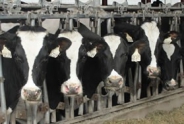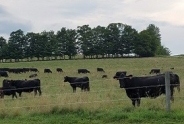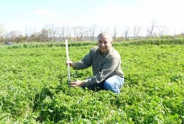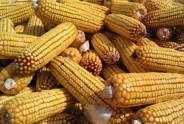1st Cutting Forage Quality Update ~ May 7, 2024
Erik Smith, Area Field Crop Specialist/Team Leader
Central New York Dairy and Field Crops
Lots of corn is being planted in an attempt to beat the rain, especially in the western part of our region. If you're taking a grass crop for baleage, this may be the last, best day to capture peak quality before grasses begin to head out over the next week. And we don't have a clear picture of when our next sunny day will be.
Many of us are dealing with extremely robust stands of winter annual weeds like henbit and chickweed in our alfalfa, no doubt aided by the mild winter. Unfortunately, at this point any spray would be a costly "revenge" spray that would do nothing but cost money and delay your harvest. And due to their life cycle, they won't be back for the rest of the season after first cutting. The best time to manage these winter annuals using a spray is either in fall or at green-up in spring. Later this summer, I'll be sharing research updates from NYSIPM outlining some options for fall management of these winter annuals. So stay tuned….
Alfalfa height is a reliable indicator of NDF values in the field, so we use alfalfa height to predict Neutral Detergent Fiber (NDF) for
alfalfa, mixed alfalfa/grass, and pure grass stands. When using alfalfa and grass height as an indicator of NDF content, in general:
Begin cutting 100% grass stands when nearby alfalfa is 14" tall to achieve the desired 50% NDF.
Begin cutting 50/50 alfalfa/grass stands when nearby alfalfa is 22" tall for the desired 44% NDF.
Begin cutting 100% alfalfa stands when alfalfa is 28" tall for the desired 40% NDF.
To achieve the desired NDF it is necessary to begin cutting at NDF values slightly lower than the desired value assuming some harvest and storage losses (which the above alfalfa height values reflect). For example 28 inch tall alfalfa is closer to 38% NDF but you will need to start then to end up at 40% NDF.
Predicted days to cut are based on daily NDF increases for grasses (1%), 50/50 mixed stands of (0.8%), and alfalfa (0.5%). Typically, NDF increases about 0.8 to 1.2/day for grasses and 0.4 to 0.7/day in alfalfa, expecting the lower end of that range in cooler weather and the higher end in warm. See the following fact sheet for more details: Predicting Spring Fiber Content of Forages.
Always check your fields to verify your heights and conditions! Remember that these predicted harvest dates are not set in stone, and will fluctuate as we go along. And they may creep up on us - especially since the fields are getting a lot of moisture now, and the temperature is only going up!
Locations and heights as of May 7, 2024:

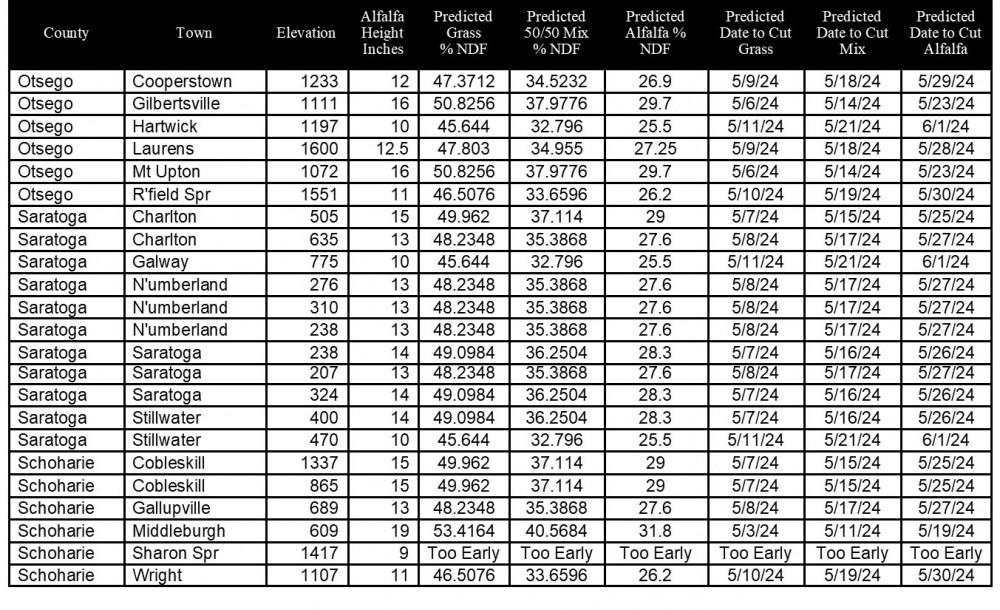
Alfalfa measured by Daniela Gonzalez, Ashley McFarland, Erik Smith, and Nicole Tommell.
If your location is not listed but you know the height of your alfalfa, this chart is for you. As of MAY 7, 2024, if your alfalfa is:
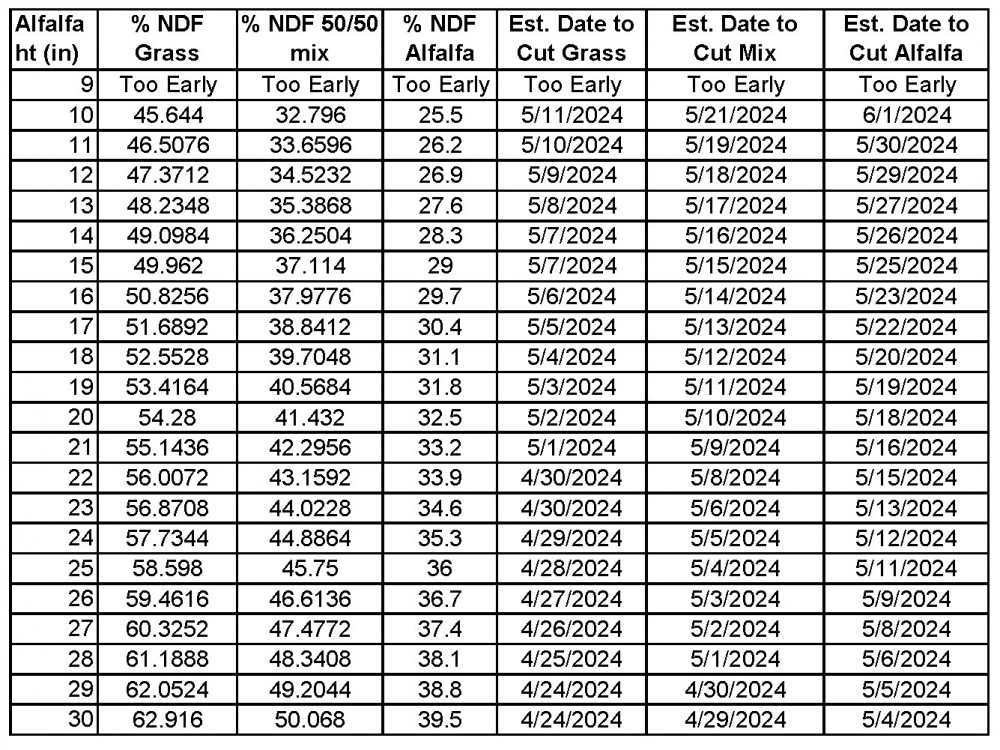
Predicting Spring Fiber Content of Forages (pdf; 95KB)
Upcoming Events
2026 Dairy Day
January 13, 2026 : Dairy Day - Hamilton
Hamilton, NY
Lunch included
January 14, 2026 : Dairy Day - Ballston Spa
Ballston Spa, NY
Lunch included
2026 Corn & Soybean Day
January 20, 2026 : Corn & Soybean Day - Hamilton
Hamilton, NY
Lunch included. 2.75 DEC Credits available
January 21, 2026 : Corn & Soybean Day - Ballston Spa
Ballston Spa, NY
Lunch included. 2.75 DEC Credits available
Announcements
Statewide Field Crop Pathology Needs Assessment Survey
Your input is wanted for identifying priorities!Sign Up for Our Weekly E-Newsletter
We send out a bi-weekly e-newsletter that has announcements, upcoming programs, and opportunities for you! Registration is quick, easy, and free. Click here to sign up today!Farmers Can Join MeatSuite For Free!
MeatSuite.com is a free resource provided by Cornell University where NY meat farmers can create a farm profile and list their bulk (wholes, halves, quarters) and bundled (i.e. Grilling Bundle) meat products.Why should farmers join?
1. It's free and easy!
2. Connect with more local customers. In the past year the MeatSuite.com farm directory had 8,300 visits from New York consumers. Farm profiles get as many as 25 views per month from potential local customers. We also spotlight MeatSuite farms on social media and bring attention and purchases to farms through highlights and giveaways.
How do I join?
Farmers can visit https://www.meatsuite.com/farmers/ to create a free farm profile. You must list at least one product for your farm's profile to go live. You'll also have access to Cornell's free Meat Price Calculator, a helpful tool for pricing your meat to make a profit.
While you're on MeatSuite, check out the "Creating Consumer-Friendly Bulk Meats" publication on the log-in page. It has tips on how to create bulk meat products that are easier for first-time buyers to say "yes" to.
If you have any questions as you create your farm profile or products, we're here to help! Please email Matt LeRoux at mnl28@cornell.edu.

